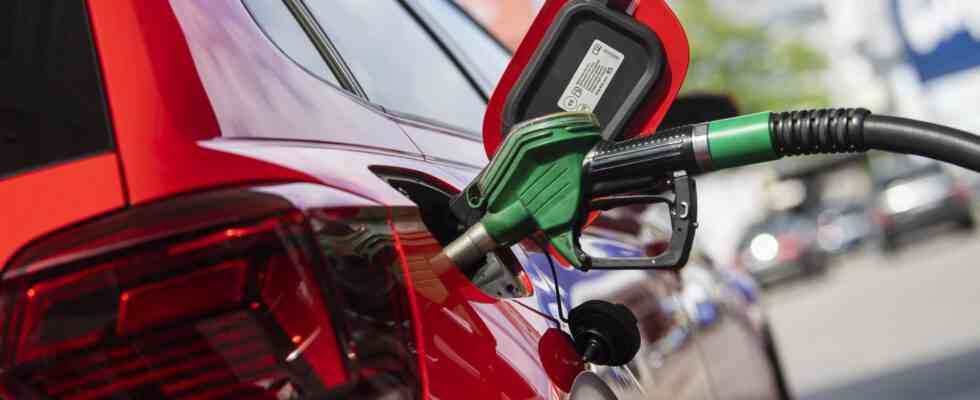Status: 03/06/2023 10:33 a.m
According to the ADAC, it could be a little cheaper for drivers to get fuel at the pump in the coming months. Especially with diesel there is still room for improvement. But not all experts are so optimistic.
One year after the extreme increase in fuel prices in the first half of March 2022, ADAC estimates that petrol prices have gradually normalized. “If you compare them with the price of oil and the euro exchange rate, they are still rather high, but the decoupling with extreme prices is over,” said Jürgen Albrecht, the automobile club’s fuel market expert.
Diesel on par with petrol
As the most recent ADAC evaluation of fuel prices shows, the average prices for both types of fuel in February were the same at EUR 1.754 per liter. Compared to January, the Super E10 is 0.9 cents more expensive, but diesel is 7.9 cents cheaper.
Last week, a liter of Super E10 cost 1.757 euros on average nationwide, and a liter of diesel 1.727 euros. E10 is thus 45 cents, diesel even 56 cents below the respective all-time high of last year. On March 10, 2022, diesel was more expensive than ever at 2.321 euros per liter on a nationwide daily average. The E10 record was reached on March 14 with 2.203 euros.
20 cents less tax on diesel
In the coming months, refueling could become even cheaper. This applies “if the competitive forces are effective and nothing out of the ordinary happens,” Albrecht told the dpa news agency. Albrecht sees a lot of room for improvement when it comes to diesel: since mid-February, the fuel has been cheaper than petrol again, but the ADAC expert emphasizes that it should be in view of the lower tax.
Taxes are reduced by around 20 cents per liter of diesel. The difference between diesel and petrol is still too small. The seasonal effects after the heating period would also speak for falling diesel prices.
Travel time as a price driver
In fact, the seasonal tailwind on heating oil and thus diesel prices is likely to ease off significantly once the heating period comes to an end. In principle, diesel and heating oil are the same product, they are only declared differently as heating oil and diesel.
However, it is also a fact that another seasonal effect in the coming months tends to speak in favor of rising fuel prices. After all, the period before Easter and up to Pentecost is usually accompanied by a sharp increase in traffic, which in turn is reflected in rising oil prices.
As demand increases, it becomes more expensive
Against the background of this seasonal effect, price increases for diesel and petrol are unavoidable, as market expert Robert Rethfeld from Wellenreiter-Invest believes. “It would be surprising if the pre-Easter positive seasonality were completely eliminated.”
On average, the price increase between 20 days before Easter and Pentecost has been around ten percent since 1987. Against the background of this effect, the oil markets and thus also the consumers at the filling stations should not have much of a chance of falling prices.
Oil prices before moving sideways
In addition: “Whereas the OPEC countries used to be satisfied with a price of $60 per barrel, they are apparently now trying to stabilize the price at $80 in order to be able to cover their own national budgets,” says Rethfeld.
Ultimately, a range between 75 and 85 dollars – as it already exists – should represent a state of equilibrium with which most states, both producing and consuming countries, can live.
With information from Angela Göpfert, tagesschau.de.

